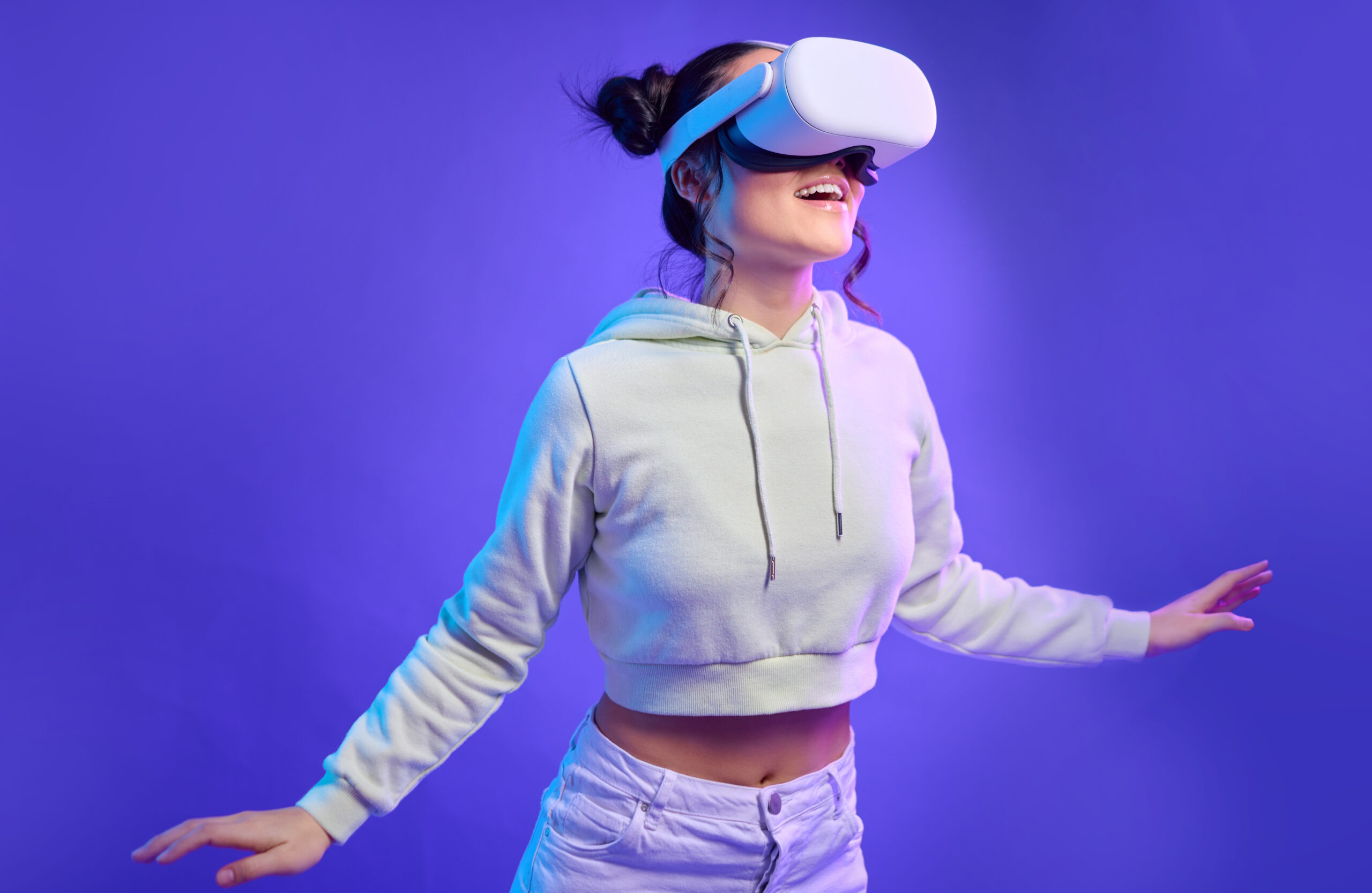TO WATCH OR NOT TO WATCH: Insights on VR Video Viewing Preferences
Virtual reality headsets are shaping the future of entertainment, yet they’re not yet in every home, and not everyone is accustomed to this format. However, history shows that groundbreaking technologies often face skepticism. For instance, when telephones were first introduced, there were concerns about spreading infections through shared usage. Now, we all carry telephones in our pockets, illustrating how the acceptance of new technological devices evolves over time.
Vision Pro, a groundbreaking mixed-reality headset from Apple Inc., is poised to revolutionize the entertainment landscape. Delving into insights from an exclusive Variety report, this article explores the impending transformation in video entertainment. As the world eagerly anticipates the potential of immersive 3D movies and TV shows on Vision Pro, uncertainties linger over whether consumers will embrace VR or mixed reality (MR) headsets over traditional screens like TV, laptops, or smartphones.
“Watching movies or TV shows” topped the list of desired experiences with Apple’s mixed reality headset among all U.S. adults, according to a recent survey conducted by the Smith Geiger Group. However, opinions are divided when it comes to utilizing this device for video content consumption. The survey revealed that 47% of U.S. adults expressed interest in using the headset for watching videos, while 53% showed no interest.
Participants were specifically asked about their interest in various video experiences, including watching movies or TV shows in a fully immersive virtual setting, viewing content on a 3D virtual screen, and immersing themselves in 180-degree 3D films and TV shows.
Mixed reality headsets present several enticing advantages for video consumption. Among those interested in using the headset for videos, respondents cited benefits such as a more immersive (61%), personalized (45%), portable and high-quality (33%), or private (33%) viewing experience. However, challenges remain. Among the 53% who showed no interest in using Vision Pro for video content, the main deterrents were discomfort (33%), redundancy with other screen devices (32%), and the cost of the hardware (31%). The initial version of Vision Pro may not address common headset complaints immediately. Some early adopters have reported discomfort, eye strain, headaches, motion sickness, neck strain, and device overheating. Technical enhancements are likely necessary to ensure a comfortable viewing experience for extended periods.
Nevertheless, indications suggest that Vision Pro could become a more feasible “screen” for experiencing immersive video entertainment. Early interest is substantial, with nearly half of consumers in the survey expressing interest in watching videos on the device.
The headset’s form factor is expected to improve in future generations, making it more suitable for extended wear. Apple is reportedly working on the next iteration of this device to address early issues, including reducing size and weight. While wearability and cost are concerns for future iterations of Vision Pro, initial feedback suggests that the immersive viewing experience is already exceptional. Recent reviews have praised its potential to deliver on VR’s promise of revolutionizing filmed entertainment.
Share:
Virtual reality headsets are shaping the future of entertainment, yet they’re not yet in every home, and not everyone is accustomed to this format. However, history shows that groundbreaking technologies often face skepticism. For instance, when telephones were first introduced, there were concerns about spreading infections through shared usage. Now, we all carry telephones in our pockets, illustrating how the acceptance of new technological devices evolves over time.
Vision Pro, a groundbreaking mixed-reality headset from Apple Inc., is poised to revolutionize the entertainment landscape. Delving into insights from an exclusive Variety report, this article explores the impending transformation in video entertainment. As the world eagerly anticipates the potential of immersive 3D movies and TV shows on Vision Pro, uncertainties linger over whether consumers will embrace VR or mixed reality (MR) headsets over traditional screens like TV, laptops, or smartphones.
“Watching movies or TV shows” topped the list of desired experiences with Apple’s mixed reality headset among all U.S. adults, according to a recent survey conducted by the Smith Geiger Group. However, opinions are divided when it comes to utilizing this device for video content consumption. The survey revealed that 47% of U.S. adults expressed interest in using the headset for watching videos, while 53% showed no interest.
Participants were specifically asked about their interest in various video experiences, including watching movies or TV shows in a fully immersive virtual setting, viewing content on a 3D virtual screen, and immersing themselves in 180-degree 3D films and TV shows.
Mixed reality headsets present several enticing advantages for video consumption. Among those interested in using the headset for videos, respondents cited benefits such as a more immersive (61%), personalized (45%), portable and high-quality (33%), or private (33%) viewing experience. However, challenges remain. Among the 53% who showed no interest in using Vision Pro for video content, the main deterrents were discomfort (33%), redundancy with other screen devices (32%), and the cost of the hardware (31%). The initial version of Vision Pro may not address common headset complaints immediately. Some early adopters have reported discomfort, eye strain, headaches, motion sickness, neck strain, and device overheating. Technical enhancements are likely necessary to ensure a comfortable viewing experience for extended periods.
Nevertheless, indications suggest that Vision Pro could become a more feasible “screen” for experiencing immersive video entertainment. Early interest is substantial, with nearly half of consumers in the survey expressing interest in watching videos on the device.
The headset’s form factor is expected to improve in future generations, making it more suitable for extended wear. Apple is reportedly working on the next iteration of this device to address early issues, including reducing size and weight. While wearability and cost are concerns for future iterations of Vision Pro, initial feedback suggests that the immersive viewing experience is already exceptional. Recent reviews have praised its potential to deliver on VR’s promise of revolutionizing filmed entertainment.









